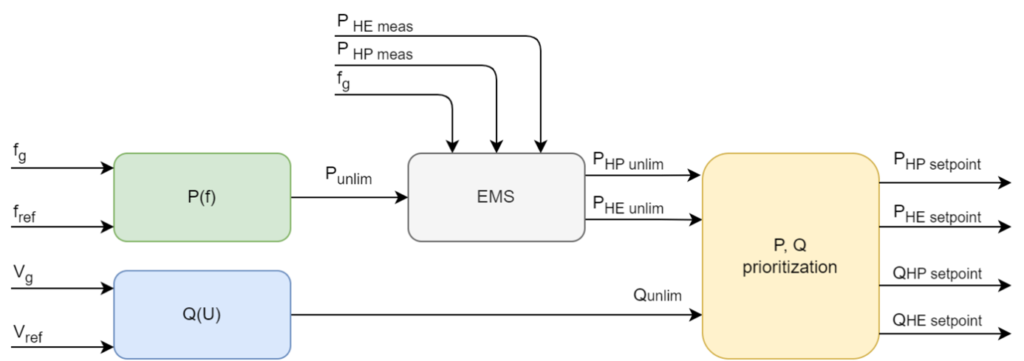This result has been achieved by partners AIT and MGEP.
To show hybrid storage systems can competitively provide services, AIT and MGEP have explored 3 cases where the coordination of high power and high energy modules is necessary in order to guarantee the correct provision of a service at the minimum operational cost. This resulted in several strategies for the coordination of the different modules in a hybrid storage system.
These methods can be used by hybrid storage owners to competitively offer grid services, thereby expanding the business model of storage units. By means of this feasibility study, hybrid storage units become more attractive in comparison to single, homogeneous storage units.
Given that typical grid services were designed before hybrid power plants (or hybrid storage systems) were envisaged, there are some uncertainties on how to leverage the capabilities of each module, and how to distribute the setpoints among the different modules present in a hybrid unit. In the scope of this project this uncertainty has been reduced by spelling out possible methods to coordinate the different modules within the unit. Three use cases are being assessed for specific insight: the coordinated provision of frequency and voltage support; peak shaving at an industrial site, and by extension, any kind of service that can be framed as an optimization problem; and the impact of primary frequency control on the aging of the different modules of a HESS.
Figure 1 – Control scheme for the joint provision of voltage and frequency support. As inputs we consider the measurements, namely frequency and voltage at the point of connection, and the power of each module. The P(f) and Q(U) blocks generate the setpoints for active and reactive power that are needed to provide adequate frequency and voltage support. The EMS block determines the optimal splitting of power setpoints between the two modules (high energy and high power). Finally, the P,Q prioritization guarantees feasible setpoints for each module taking into account the preferred grid service.
Figure 2 – Load and generation balance in a power grid: the electrical network can be seen as scales where the frequency varies whenever there is no balance between the power being consumed and being generated.

